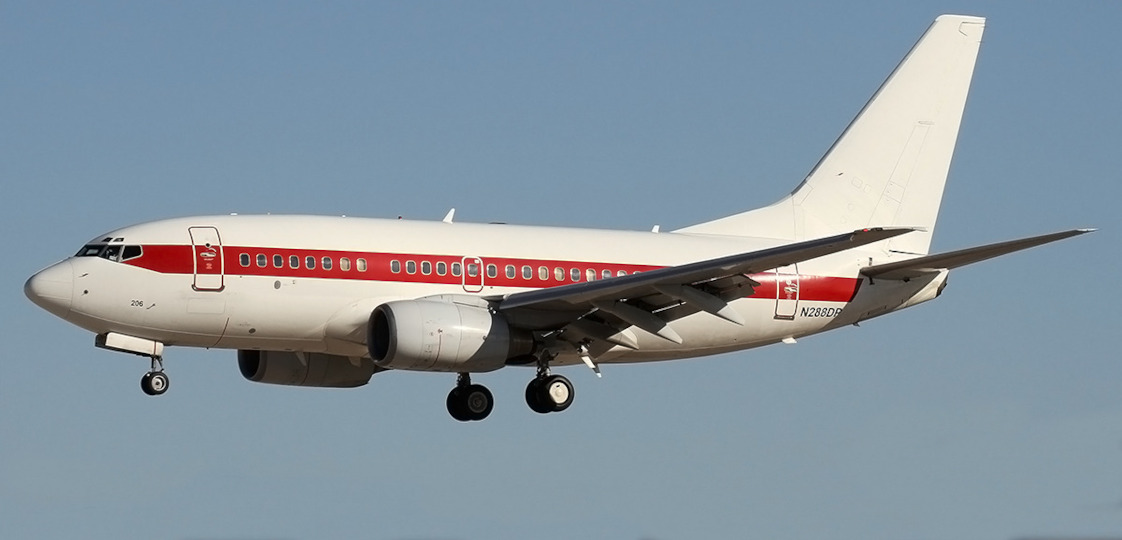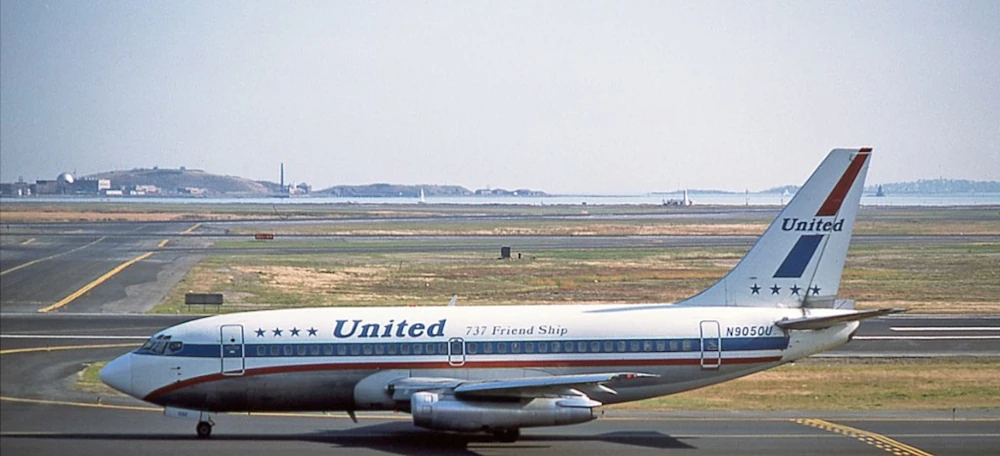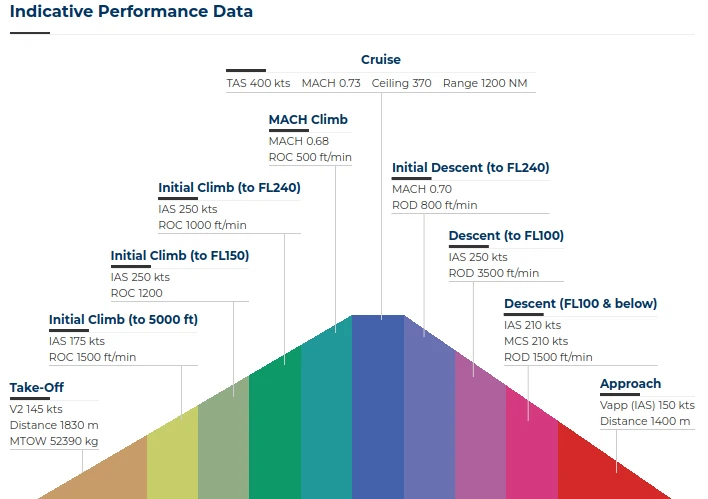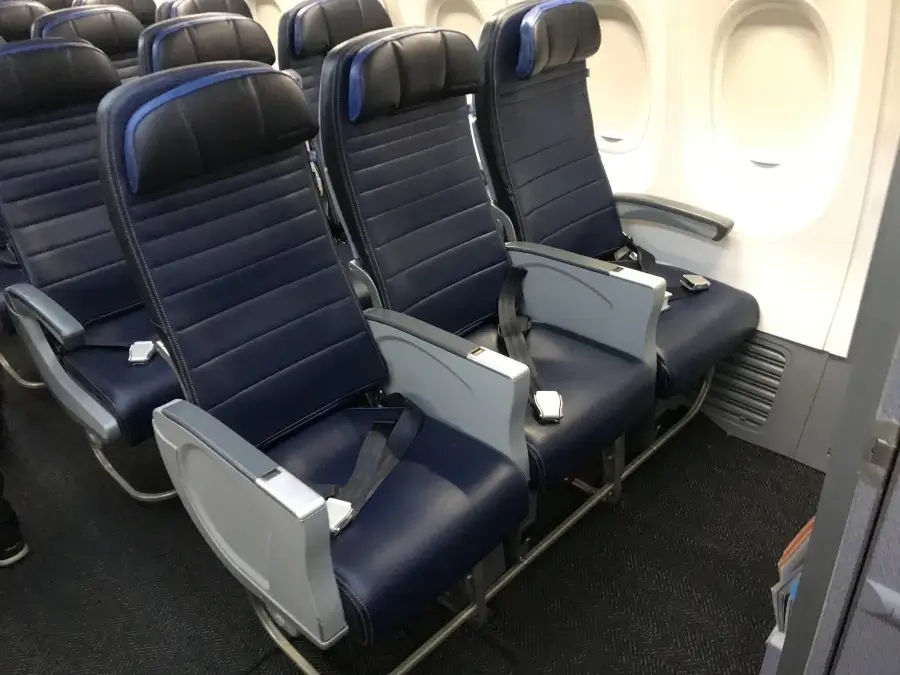
A Comprehensive Overview of the Boeing 737-200
The Boeing 737-200 is a 2-meter longer version of the Boeing 737-100 aircraft, which has increased passenger capacity and range. It became the first model of the world’s most popular airliner family Boeing-737, developed in the mid-1960s for flights on short-haul routes.
All Boeing 737 airplanes are divided into 3 families: 737 Original, 737 Classic and 737 Next Generation. The -100 and -200 modifications belong to the Original family: 737-100, -200 (produced from 1967-1988). Thanks to the cigar-like engine nacelle, which is almost completely embedded in the wing from its leading to trailing edge. The 200 is recognizable due to the cigar-shaped engine nacelle, which is almost completely built into the wing from its leading to trailing edge and the smooth curve of the top edge of the keel.
United Airlines was the first to purchase the Boeing 737 200.
This model used Pratt and Whitney JT8D engines with a small degree of twin-circuit capability. The Boeing 737-200 was put into service in 1968.
A total of more than 900 machines of this type were sold for air carriers. By increasing the number of seats in each row, Boeing gained the upper hand over its rival DC-9. The Boeing 737 200 was operated by Southwest Airlines, Ryanair, United Airlines, and American Airlines.
The Boeing 737-200 has now been replaced by more current versions of the Boeing 737-700, Boeing 737-800, and Boeing 737-900.
History of the Boeing 737 200
The development of the Boeing 737-200 traces back to the mid-1960s when the Boeing Company sought to expand its lineup of narrow-body aircraft for regional and short-haul routes. The first Boeing 737-100 was rolled out in the late 1960s, marking the inception of the company’s narrow-body series.

However, to meet airlines’ demand for increased capacity and extended range, Boeing embarked on developing an enhanced version, which later became known as the Boeing 737-200. Development began in the late 1960s, with the maiden flight of this variant taking place on August 8, 1967.
The Boeing 737-200 was an enlarged version compared to the 737-100, offering greater range and passenger capacity. Powered by two Pratt & Whitney JT8D-15A engines, it boasted improved flight characteristics compared to its predecessor.
One of the first customers to acquire the Boeing 737-200 was United Airlines, which utilized it for short to medium-haul flights.
The Boeing 737-200 emerged as one of the most successful models in aviation history. Over 900 units were sold to airlines worldwide, remaining popular for decades after its initial release.
Design and Innovation of the Boeing 737-200
B737-200, being a predecessor in the 737 series, boasted a design that exemplified innovation and efficiency in the realm of commercial aviation.
Externally, the Boeing 737 200 showcased a timeless design characterized by its streamlined fuselage, swept-back wings, and distinctive T-tail configuration. These aerodynamic features not only contributed to the aircraft’s aesthetic appeal but also optimized fuel efficiency and aerodynamic performance, allowing for smooth and stable flights across various weather conditions.
The fuselage of the 737-200 was designed to maximize interior space while maintaining structural integrity. Its narrow-body design facilitated easy boarding and deplaning at airports with limited infrastructure, making it an ideal choice for short-haul and regional routes.
The cockpit of the Boeing 737-200 was equipped with advanced avionics and instrumentation, providing pilots with the tools and information needed to safely navigate the skies. The flight deck featured ergonomic controls and displays, allowing for intuitive operation and enhanced situational awareness during all phases of flight.
B737-200 Technical Specifications
Passenger Cabin
| Crew | 2 pilots |
| Number of passengers | 119 |
Flight Data
| Range (km) | 4900 |
| Cruise Speed (km/H) | 871 |
| Max. Speed (km/H) | 978 |
| Takeoff Length (m) | 1990 |
| Runway Length (m) | 1350 |
| Engines | 2 × Pratt & Whitney JT8D-15A |
| Engine Thrust (kN) | 2 × 71.2 |
| Max. Fuel Capacity (l) | 19532 |
| Max. Altitude (m) | 11300 |
Dimensions
| Length (m) | 30.53 |
| Height (m) | 11.23 |
| Wingspan (m) | 28.35 |
| Wing Area (sq. m) | 102.0 |
| Fuselage Width (m) | 3.76 |
| Cabin Width (m) | 3.53 |

Weight
| Empty Equipped Weight (kg) | 27646 |
| Max. Takeoff Weight (kg) | 52390 |
| Max. Landing Weight (kg) | 46720 |
| Max. Commercial Load (kg) | 15710 |
Modifications of Boeing 737-200
The Boeing 737-200 has undergone various changes and modifications during its service, depending on customer needs and market requirements.
Boeing 737-200 Seat Map
The aircraft manufacturer produced Boeing 737-200s with a single economy class cabin for 130 passengers and a two-class cabin for 102 passengers. The cabin width is 3.5 meters. It is equipped with air conditioning system with two channels, primary power supply system and analog avionics complex with electromechanical induction.

Business Class
Row 1-2 is the business class cabin. The seats are arranged in two rows in a 2×2 layout. Passenger capacity is 8 people. A large aisle between rows and a wide step of space between seats in a row creates comfortable conditions for passengers’ flight. Some discomfort may be felt by the passengers of the first row, which is due to the proximity to restrooms and technical rooms. During a night flight may be distracted by the unplugged light in the aisle. And in the second row of business class passengers may feel uncomfortable due to the noise in economy class, located just behind the partition.
Economy
Row 3 through 19 is the economy class. Seats are arranged in two rows according to the scheme 3x3x. The capacity of the salon is 98 people. The most comfortable seats of the 3rd row with increased legroom are considered to be the most comfortable.
Between 8-9-10 rows there are emergency hatches. Passengers with children, pets, underage travelers, pregnant women, disabled and pensioners can not take seats here.
The most uncomfortable are considered the seats installed on the last 19th row of the economy class. They are located next to the toilet, so during the flight passengers can be distracted by other travelers moving around the cabin to the restroom and gathering near its door noisy queues. In addition, the seats on this row are immobile (the backrest does not recline).

In each airline’s airplane, the arrangement of seats can vary, depending on the selected Boeing 737-200 seat map.
Boeing 737 200 in Modern Aviation
Despite their age, Boeing 737-200 airplanes still maintain a special place in aviation history and continue to serve various roles across the globe.
Originally introduced in the late 1960s, the Boeing 737-200 was a pioneering narrowbody aircraft that revolutionized short to medium-haul air travel. While newer generations of the 737 have since taken center stage, a select few 737-200s remain operational, cherished by aviation enthusiasts and utilized by niche markets.
Today, these vintage aircraft are prized for their reliability, simplicity, and economic viability on certain routes. While their numbers have dwindled over the years, some airlines and operators still rely on them for specific missions, such as charter flights, cargo transport, or special operations.
One such operator is Nolinor Aviation in Canada, which continues to fly a small fleet of Boeing 737-200s, including unique «combination» variants that can be configured for either passenger or cargo transport, showcasing the aircraft’s adaptability even in modern times.
In addition to commercial use, some B737-200s have found new life in roles such as aerial firefighting, humanitarian missions, or even as private jets for high-profile individuals who appreciate the charm and character of these classic airliners.
While the era of the Boeing 737 200 may be coming to a close, its legacy endures, reminding us of an era when aviation took bold strides forward, and these iconic aircraft played a significant role in shaping the way we travel.


